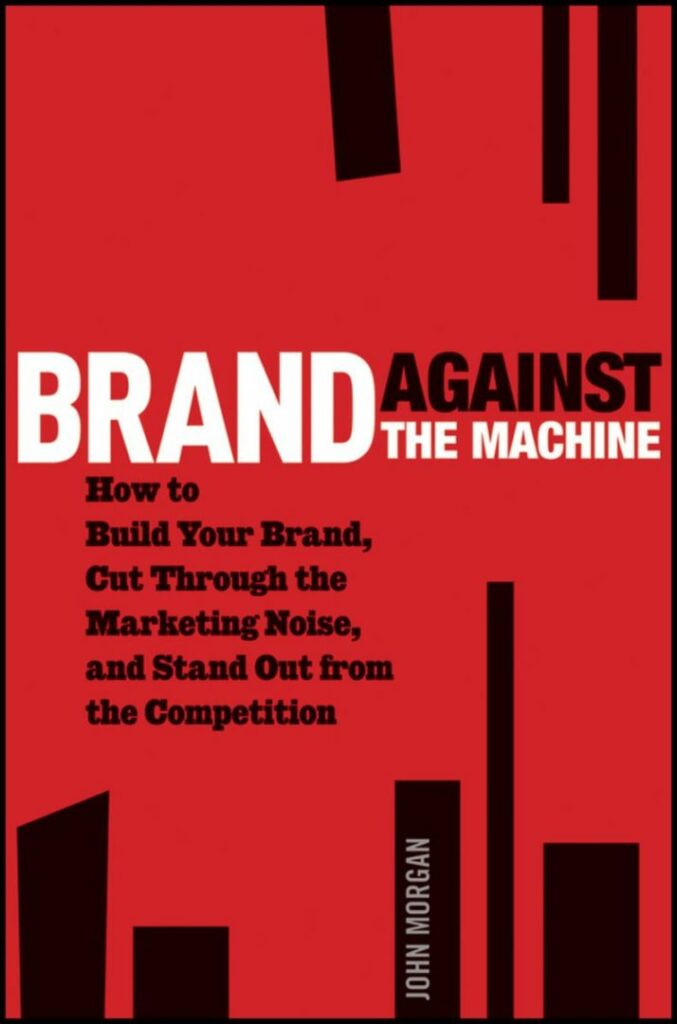“Brand is the human part of a business”
– Claire Lowson
Before taking any steps on brand – a good rule for any kind of activity that involves business communication – we need to “set” the scenario in which we will operate and clarify a few notions underlying what will be done. This will help to align the knowledge of all the people involved in the project and to carry out the work while listening to and respecting their expectations. We often take for granted certain notions and we forget the importance of managing expectations, thus falling into the trap of disinterest and frustration that are likely to wreck even the most valid initiatives. I therefore want to share with you the 5 points of reflection that I use before starting any branding activity – whether it be a business that hasn’t started yet or a thriving business, maybe even with an “important history” in evolution or transformation. I hope they will be useful to make things clear and ensure full involvement and focalization.
1. Everybody is part of the brand
All the people involved in our business, whether internal or external, conscious or not, carry out branding activities: by talking to friends, by recommending products, by posting on Facebook or Instagram, by selling or telling stories.
These kinds of relations and exchanges carry with them brand attributes and qualities which influence the brand perception, guiding the purchase decisions o potential customers.
Becoming aware of and responsible for all these interactions and actively using them to share the principles of our brand, will trigger positive word-of-mouth, “true” and therefore credible. Analyzing the touch points, digital and non-digital, is fundamental to obtain unanimity and consistent actions that “pull” all in the same direction. This way we’ll be able to communicate the very “heart of our business”, i.e. our brand, in every single exchange, and we won’t have to ask ourselves “Why do they see us differently than what we really are?”.

Photo by Cris Tagupa on Unsplash
Memo
Become aware of and responsible for the message
2. Be “loud”
Once we figure out our identity and the type of promise we want to launch to the market, i.e. why we exist, it is essential to announce it in a “loud” way. Not literally of course, but working on the idea that if we want people to know something about us we need to tell them clearly and frequently.
 As John Michael Morgan , the author of my favourite book Brand Against the Machine, says “You have to scream from the rooftops so that people know exactly who you are and what you do”.
As John Michael Morgan , the author of my favourite book Brand Against the Machine, says “You have to scream from the rooftops so that people know exactly who you are and what you do”.
Again, we’re not talking about our communication style and “tone of voice” – which must be consistent with our brand identity – but of the need to be clear. So we can be sure that, as far as we are concerned, the message has been sent in the right way.
Memo
Never take anything for granted
3. The brand is an identity of its own
The brand represents a business with its own identity, independent from the one of its founders or employees, who only later align themselves or identify with the values carried forward by the business they belong to. As underlined in the quotation above, the easiest way to approach the activities we are talking about is to consider the brand as the human part of the business with its distinctive personality and character. In order to be able to observe from the outside and “see” the brand as a unique and separate entity – especially if we are the founders of the business or we want to help them think in a more detached way – the Meta Position technique proposed by the NLP (Neuro-Linguistic Programming) can be useful: it consists in adopting an external point of view on the situations we need to evaluate.
Memo
Take a different perspective
4. The Brand Evolves over time
Brands, like people, evolve and take on new features due to the changing of times, of markets, of technologies etc.. However, they remain effective only if they manage to always keep the same promise. The why that has led us to create our business doesn’t change, it’s the how and what that need to adapt to the new market conditions. In a strategic perspective this allows us to build up a clientele that will keep identifying in what we believe, capable of assimilating the changes and of seeing them not as inconsistencies but as added value. Our advice is to run a cross check that considers positioning, perception and value of the brand at least once a year in order to understand how the brand is changing.
Memo
Change the what and how, but not the why
Photo by Chris Lawton on Unsplash
5. The only asset capable of speaking to people’s hearts
Products and services are designed to meet the needs – be they real or latent, functional or entertaining – that certain people experience in their lives. The brand is aimed at a deeper level of needs that Maslow would categorize in belongingness, self-esteem and self–realization. For this reason the promise contained in it, and the values that support it, become the key to helping people to identify with our business. Being able to create this alchemy leads to significant competitive advantages.
Just think of how often, having to choose between two products, the brand plays a central role and makes the price factor less relevant: “This brand has a better reputation”, “They support the environment”, “They are committed to promoting happiness in the world”. A very simple exercise to realize this is to ask ourselves every time we make a purchase: what are we actually buying? What has led us to this choice?

Pexels Photo
Memo
Business is – also – human
In the next article I’ll talk about how to use the five senses, plus one, to do branding.
| partem claram semper aspice |
The photos used - where not owned by the editorial team or our guests - are purchased on Adobe Stock and IStockPhoto or downloaded from platforms such as UnSplash or Pexels.
Did you like this post and want to learn more about the topics?
Passodue research on issues related to sales, marketing, ethics and the centrality of human beings within the market logic, officially started in 2012. The results derived from our work are described in the publications and in the books you can find in this section.






This Post Has 0 Comments